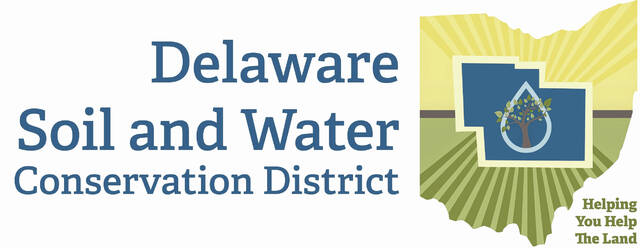
Since the 1950s, people throughout the United States have sought after the perfect lawn, increasingly using pesticides to kill weeds and insects, and fertilizers to encourage grass growth. Many of these products wash off lawns and into bodies of water.
We recently discussed how organic lawn care products and conservation practices offer an alternative that can provide a healthy lawn with fewer potentially harmful products. However, when applied improperly, even organic products can contribute to algae blooms and other water quality issues. Agricultural conservationists advocate for the 4 Rs of nutrient stewardship to guide proper fertilizer application – Right Source, Right Rate, Right Time and Right Place. These principles can also be applied to residential lawn care to help foster a beneficial environment for your family and the local wildlife.
The Right Source should provide nutrients that are depleted in the soil in a form that is available for uptake by the grass. The first step involves assessing the current health of the lawn, including a soil test. Whether you are using organic or conventional fertilizer products, you should always complete a soil test prior to fertilizing since certain nutrients can remain in the soil for years and may not need to be applied as often as previously thought. Soil health is especially vital for weed prevention, as it will keep turfgrass thick and healthy.
Soil amendments and fertilizers should be added at the Right Rate in response to soil test results to maintain adequate levels of nutrients for optimal grass growth. Organic products like fertilizer derived from manure often require higher application rates to achieve the same level of nutrients, but these products support a natural nutrient cycle instead of adding more nutrients to an already overloaded cycle. If you are working toward an organic lawn care routine, check labels to confirm that products being sold as organic do not have synthetic additives – there is currently no regulation of organic labeling for lawn care products.
Applying fertilizer at the Right Time helps to ensure that the nutrients will be absorbed by the lawn and will not run off into bodies of water. Applying fertilizer to frozen or saturated ground, or just before a rainfall, greatly increases the rate of runoff. Fertilizer is generally best applied before periods of increased growth, as nutrients will be in highest demand during these seasons.
Right Placement in the lawn is exclusively in the root area of the plants and away from walkways, bodies of water, and driveways. Some broadcast spreaders come with a guard that can be enabled to prevent spreading fertilizer in undesired areas. When possible, use a staging area for fertilizer that can be swept up if a spill occurs. Spills on hard surfaces will run off into bodies of water, and spills on the lawn may cause fertilizer burn. Always store fertilizers and soil amendments in dry, sealed containers where nutrients cannot leach out.
Remember that for fertilizer more is usually not better, and a flexible, holistic approach to lawn care is best. If you are interested in decreasing the harmful effects of nutrient runoff, the 4Rs of nutrient management will help to keep your lawn healthy with less impact to the environment.
To learn more about the work of the Delaware Soil and Water Conservation District, please visit our website at soilandwater.co.delaware.oh.us or call us at 740-368-1921.


